Review for Metropolis - Ultimate Collectors Edition
Introduction
Metropolis is the city of the future, brainchild of its founder, Joh Fredersen, who rules over a perfect idyll where the elite live lives of indolence, ease and leisure. It's a veritable Eden where the children of the Gods frolic. That's up above; down below in the undercity is where the workers toil ceaselessly to keep the city running, out of sight and out of mind of the ruling class. Joh's son Freder is happy to partake of the comforts that his position in life afford him. That's until the day that the doors open, and a girl leading a gaggle of grimy children appears. She's there to show her charges how their brothers and sisters live up above, and from that moment Freder is smitten. The girl and the children are quickly bustled back underground, but Freder, determined to find the girl, Maria follows her down into the depths of the city. He's shocked to come face to face with the reality of the foundations of his heavenly existence, the workers, toiling like slaves, and metaphorically being sacrificed to the machine that is City. He confronts his father with what he has seen, but is met with indifference. The elite care not for what drives their society, while the workers resent their apathetic overseers. Only Maria counsels another way. There must be a mediator, someone to bridge the gap between the workers and the elite, to reshape society so that it is fairer for all. And it is she who advises the workers to wait for such a mediator to appear.
Such thoughts pose a danger to the society that Joh Fredersen has created, and he needs a weapon against such philosophies. The inventor Rotwang was a rival to Fredersen, for the love of Freder's mother Hel. Hel died in childbirth, but the grief and antagonism between the two men has lasted ever since. Rotwang's love for Hel has driven him to his ultimate creation, a man-machine that he will give Hel's likeness to, so that she may live again. But seeing this robot gives Fredersen an idea. Given Maria's likeness instead, the robot can take her place in the undercity, and sow seeds of dissent and discord among the workers, destroying Maria's dreams of a re-ordered society.
I’m reviewing Metropolis again, although it may be fair to say that I said all that I could say about the film back when I reviewed the DVD for this site back in 2010. I’ll point you to that review for my thoughts on the film, which haven’t changed in the slightest after watching it again for this review. I was still to jump on the HD bandwagon back then, so a part of me is being just the slightest bit cheeky in taking a look at this Ultimate Collector’s Edition, as I really wanted to see what an eighty-eight year old movie would look like on Blu-ray. But the real draw for me this time around was disc 2 of the Ultimate Collector’s Edition, which for the first time in the UK brings Giorgio Moroder’s Metropolis to Blu-ray, and while the US has had it for a few years, this release gets some exclusive extra features too. Contentious, controversial, and divisive it was back in 1984, but Giorgio Moroder had the effect of bringing Metropolis back to life for a whole new generation.
The Ultimate Collector’s Edition is limited to 4000 copies worldwide, offers a chance to win a Metropolis engraved gold bar, and also includes the 56 page booklet that came with the 2010 release. I didn’t receive the steelbook packaging to comment on, or the booklet, although I did take a look at the pdf file for the previous review.
Disc 1 contains the Complete Metropolis as released back in 2010 by Eureka Films and Masters of Cinema.
Picture
Metropolis’s presentation on Blu-ray reflects the original aspect ratio of 1.37:1 and is pillarboxed at 1080p resolution. The pillarboxing is actually a deep grey rather than true black, but blends into the film so well that you forget it’s there far more quickly than you would have if it had been black. The image quality is as variable as you would expect given the nature of the film. The original footage that has always been available is astonishing. It's been cleaned up; the damage removed and has a clarity and definition that is breathtaking given the film's age. The contrast levels are good, and the detail and visual splendour of the film just explodes off the screen. You truly get to appreciate the sets, the visual design, and the grand scope of the film's creation. The found footage from the Buenos Aires print is awful in comparison, but probably what you would expect a silent movie to look like. The 16mm source means that picture image has been lost to cropping, and the film indicates this with a black bar where the lost image should be. It's grainy, scratched and murky, and that's following restoration. But the restoration of the footage means that the story is almost complete, plotlines and characters practically excised from the original have been restored, and you very quickly forget the quality of the footage. A couple of scenes remain absent, and intertitles appear to describe what happens.
I did opine that the film ought to look fantastic on Blu-ray when I reviewed the DVD, but I have to admit to having some trepidation when I finally got around to the HD version of the film. But it really is a major step up from the SD format, the detail in the sets, the backdrops, the effects shots and the costumes is immediately apparent, and the film looks far more vibrant and organic in HD. That said, the contrast between the restored film and the 16mm Argentine print is even more drastic here. The restored print is almost pristine, a stable, clean print, with minimal damage; just the odd flicker or stain.
Sound
You have a choice between DTS-HD MA 5.1 Surround and DTS-HD MA 2.0 Stereo. The original 1927 score was recorded again, so you get the sound in full, modern technical clarity. It's a grand, operatic and emotive symphony that drives the film, and there isn't any of the disconnect that I expected, watching an eighty-year old silent film, with 21st Century digital surround sound. In fact, given the restored visual quality, I almost felt as if I was watching a new film. The intertitles are in the original German (translated from Spanish when it comes to the Buenos Aires print), and are translated into English on the subtitle stream. You can turn the subtitles off if you are fluent.
Extras
The Blu-ray goes straight to the static menu screen and it's a matter of just pressing Play and you're off.
On the disc, you'll find the audio commentary, recorded in March 2010 by Jonathan Rosenbaum and David Kala, presented in DTS-HD MA 2.0 English. It isn't the most ideal of audio recordings, as there is a bit of echo, but their comments are clear throughout. They provide a look at the film's history, and the critical response down the years. They talk about the various versions of the film, and compare it to the novel. It's not necessarily scene specific, but it is a very entertaining, and informative commentary, well worth listening to.
Die Riese nach Metropolis is a 54:38 documentary presented in 1080p HD with German audio and English subtitles, which looks at the making of the film, the stories around it and how it was treated following its release, and the long road to restoration, culminating with that serendipitous discovery in Argentina. There's plenty of interest here, including vintage interviews with Fritz Lang. It's stunning to hear just how much of a flop Metropolis initially was, costing 5 million Reichmarks; it earned just 75000 in its first year of release.
You'll also find the 2010 HD trailer for the restored Metropolis, running to 2:01.
Disc 2 contains Metropolis, as adapted for audiences in 1984 by composer Giorgio Moroder.
Introduction
Metropolis has always been on the cutting edge it seems, presenting a thrilling and epic vision of the future when first released in 1927, a film that went on to inspire and move the films that came after it. That’s despite it being practically mauled into incomprehensibility following its premiere, drastically cut for its re-release, and re-edited even further for foreign audiences. It wasn’t until the rediscovery of the Argentine print that the complete version became possible, but this wasn’t the first attempt to restore the film to Fritz Lang’s original vision. Giorgio Moroder was always a fan of the film, and for his 1984 version, he too went back to the original source material, the script and the novel to see how the film was meant to go together, and he scoured the globe for as much extant footage as he could find. What he did with the soundtrack may be the cause for much criticism, but the soundtrack to silent movies was always a matter of interpretation, with the original score to films being performed live in cinema theatres by organists. That he ditched the original music and composed his own merely meant that it added a contemporary feel for 1980s audiences.
What made his version of Metropolis so cutting edge in 1984 was that it was one of the first films, if not the first to be presented theatrically with digital audio. We’re used to it now, with Dolby Digital and DTS logos plastered on film prints and DVD and Blu-ray boxes, but film used to have the audio recorded in analogue format, the kind of thing we had on VHS. Digital audio for consumers was less than a decade old at this point with CDs still a luxury item, while digital audio for film was in such a state of infancy that the soundtrack couldn’t be recorded on the film, it was recorded separately, and had to be synced up manually to the film when projected. You’ll have no such problem with this Blu-ray though.
Picture
What a difference a digital restoration makes! The technology that was used for the 2010 release just didn’t exist 30 years ago. Giorgio Moroder pieced together what was the best possible version of Metropolis at the time from the sources that he had, and the print is subject to all the vagaries of 57 years of age and degradation. The print is streaked with signs of age, print damage and dirt, and is never once stable during playback. The shake is easy to get used to though. As well as his approach to the soundtrack, he also mirrored an approach used to film projection in the silent age, the use of tints to add colour to monochrome imagery, something which would have been accomplished with gels originally, but which Moroder could apply to the film in a more creative way. So it is that the undercity gets a blue tint, the upper city is gold, the vision of Moloch is red, while there’s a little more localised creativity applied to the effects sequences, spots of colour here and there. By far the most contentious change might be the rotoscoped skyscapes in some sequences.
The image is presented once more as 1.37:1 pillarboxed, but the source material doesn’t look nearly as good as on disc 1, with the aforementioned instability and damage. There’s also a comparative loss of detail and clarity due to the tinting process. The contrast is never as good as the Complete Metropolis on disc 1. The tints also result in posterisation in scenes, something I would have thought that Blu-ray would have avoided. You might wonder, given that the fully restored Complete Version now exists, why that couldn’t have been used as source to rebuild the Moroder version with a clear and stable print. But as mentioned the alterations he made to the effects sequences, the rotoscoped skies would make that nearly impossible, while there would be questions as to what to do for those scenes where the Moroder version used stills, which now have footage thanks to the Argentine print. Of course on top of that, the Complete Version will be a jealously guarded property. The Moroder version is watchable enough on Blu-ray.
Sound
Then, the real reason for watching the Moroder version is actually the audio, to take in what the composer did to revitalise Metropolis for 1980s audiences. Digital audio begets digital audio on this Blu-ray, although ironically this DTS-HD MA 5.1 Surround version of the film is probably far superior to the audio that was achievable in 1984. If you want authenticity of the audio experience, this disc also packs a PCM 2.0 uncompressed stereo track. I went with the surround audio and was offered a rich, vibrant and unmarred experience which brought across Moroder’s score, and the various songs from artists such as Pat Benatar, Freddie Mercury, Bonnie Tyler and Adam Ant, to warm and enveloping effect.
I have no problem with the score itself, I grew up with synthesised music scoring my favourite science fiction films, films like Blade Runner, Flash Gordon, Dune, TRON, and Starman, and I was perfectly happy hearing those eighties composing sentiments driving the timeless story of Metropolis. What does jar even my eighties kid sensibilities are the choice of pop songs, which are quintessentially eighties’ songs. They seem very out of place in a science fiction film made in 1927. The secret is to either find music of the era in which the film was made, or the era that the film is set in. A film is naturally dated by the year of its production, and having period pop music in a future setting isn’t that awkward. I can handle the grunge rock in Titan AE for instance. There is the eclectic soundtrack of Blade Runner, some songs which actually sound as if they’re from the 20s and 30s, or from the Middle or Far East, which give that film a timeless feeling. You also get a similar feeling from the songs used in the first release of Return of the Jedi. But the songs used in Metropolis seem to come straight off MTV, and don’t tie into the film’s look or the story all that well. The original intertitles are gone, replaced with subtitles on the print, and the odd expository intertitle for missing footage.
Extras
The disc goes straight to another static menu, this time gold tinted.
There are a couple of fascinating featurettes here, beginning with Metropolis Refound, which lasts 48:46 and is presented in HD, mostly in Spanish and German with English subtitles. This documentary looks specifically at the story of the rediscovery of the Argentine print, and also its history between 1927, when it was purchased in Germany, all the way to the present day, and it can at times be a depressing tale of bureaucracy and neglect.
The Fading Image is a 17:50 featurette, presented in 1080p and English although obviously upscaled from an SD source. It’s the 1984 companion piece to Giorgio Moroder’s version, which looks at his restoration of the film, but also adding a useful insight on the fragility and impermanence of film, especially the nitrate stocks that were used pre-1950. You can be more forgiving of the Argentine curators transferring Metropolis from its 35mm source print to 16mm, and disposing of the original, when you learn just how prone nitrate film is to spontaneous combustion, and even explosion!
Conclusion
Is this Metropolis Ultimate Collector’s Edition all that a fan could hope for? Well, confidentially, my weekend viewing of Metropolis wasn’t at all complete until I paid a visit to Youtube and took in Queen’s Radio Gaga, and if you are going to present the Moroder version of the film, you’re missing a trick by not including that contemporaneous music video which heavily used footage from the film. But in every other respect, this is the perfect package for fans of Metropolis, the Blu-ray offering the film in spectacular quality for a production of its vintage, and replete with interesting and appropriate extra features.
The real gem in this release is the Complete Metropolis, presented on disc 1, as it was back in 2010. There’s no denying the power of the original film, in as complete a form as possible, approaching the original vision of Fritz Lang. But the Giorgio Moroder version is no mere bonus itself, it is half the package, and looking at it 30 years on, it’s taken its place in film history, not only keeping the Metropolis legacy alive, but informing and inspiring a whole new generation of filmmakers. I’ve already mentioned the Radio Gaga video, but there’s Madonna’s Express Yourself as well, perhaps the anime adaptation of Tezuka’s Metropolis too, Gattaca maybe and others, which might have had their seeds sown in that 1984 jolt, that reminder that this film existed.
There is an MTV sensibility to the songs chosen for the Moroder version, but the synth score itself still sounds appropriate to my eighties tuned ears. The effect of removing the intertitles, and adding subtitles gives the film a punchier pace, while the tints and colour on the whole are sensitively applied (I’m not sure about the rotoscoped skies though). What I was surprised at, was that despite the running time being shorter by over an hour, Giorgio Moroder’s Metropolis still retains the fundamental story, even if it loses many of the character beats.
There are only 4000 of these Ultimate Collector’s Editions out there. Better get your orders in quick.
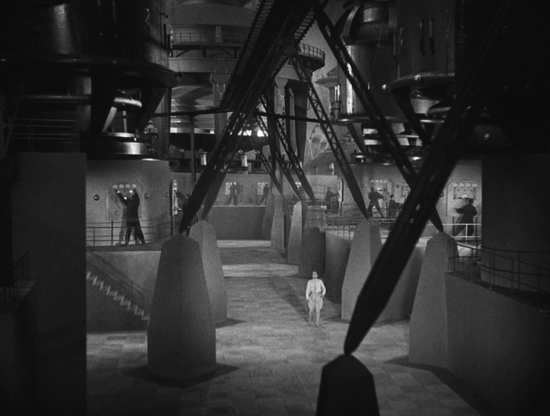
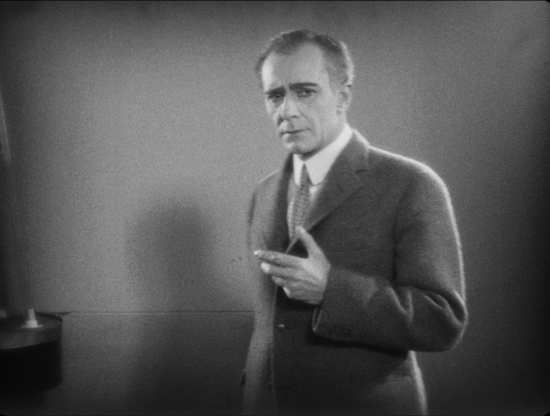

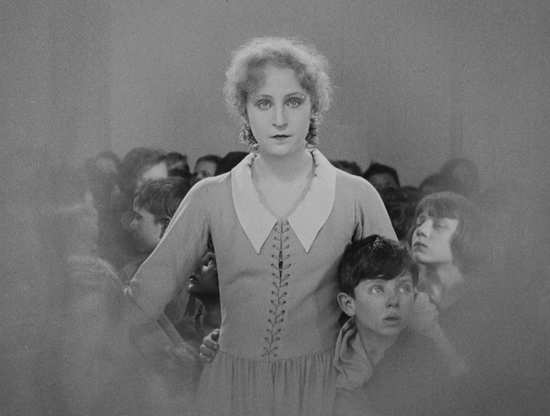
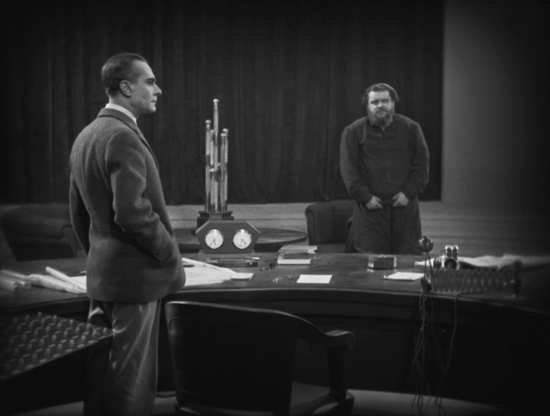
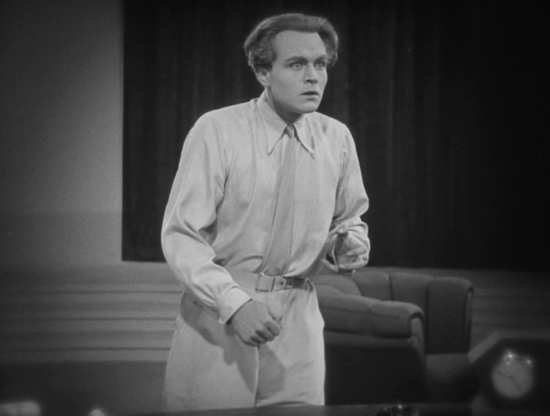


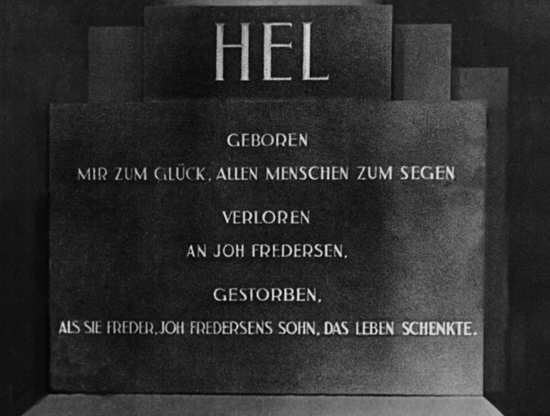
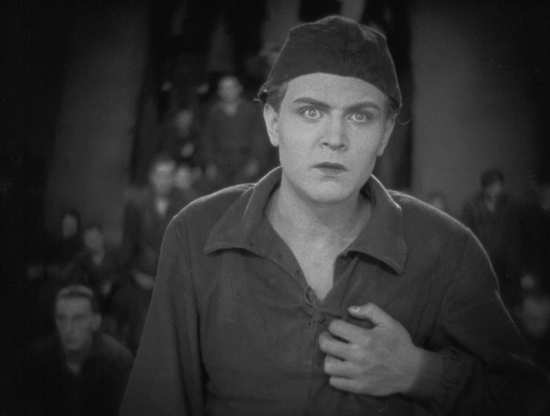


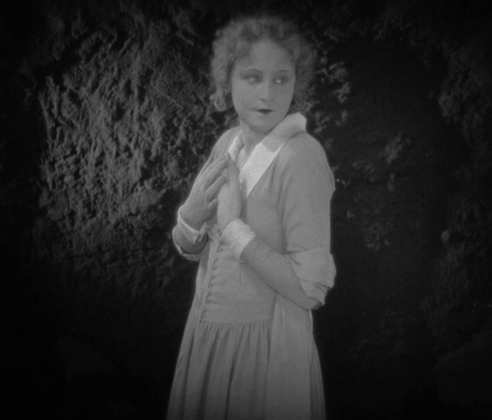
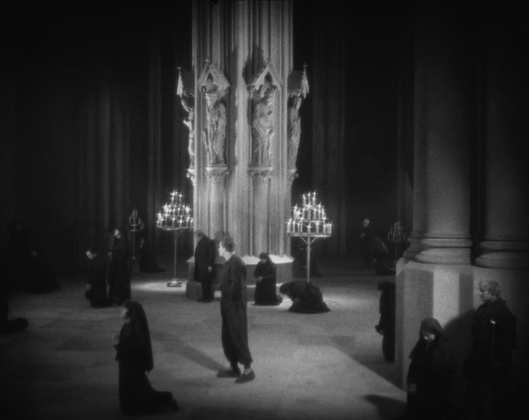
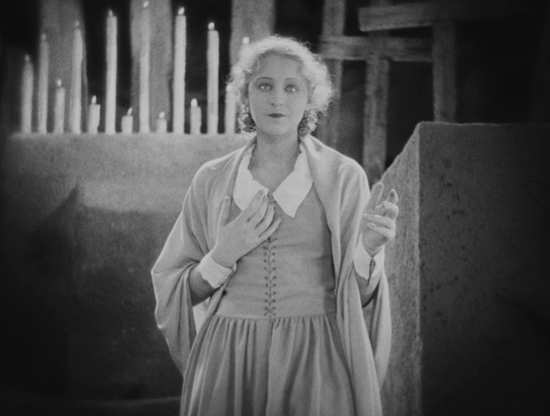
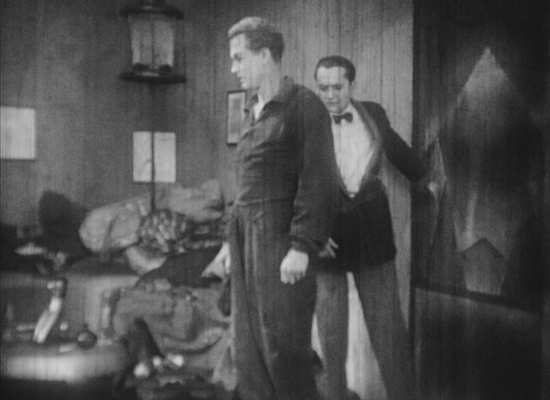
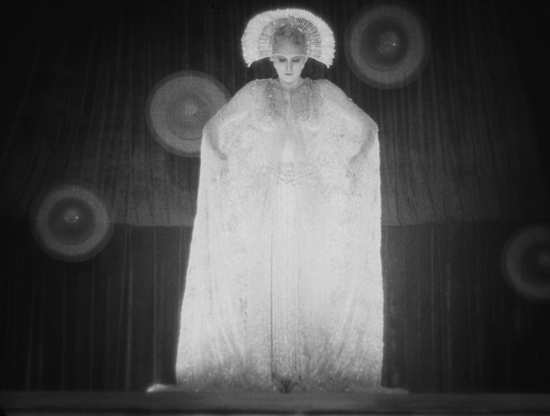
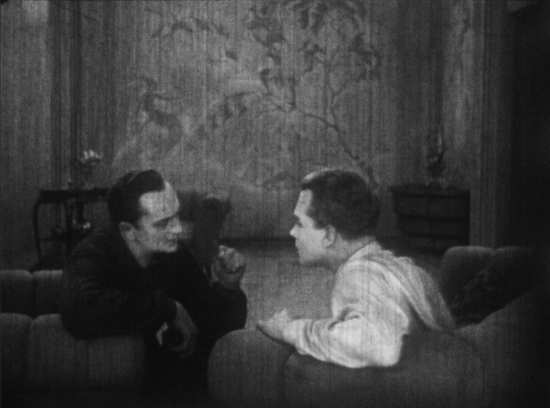
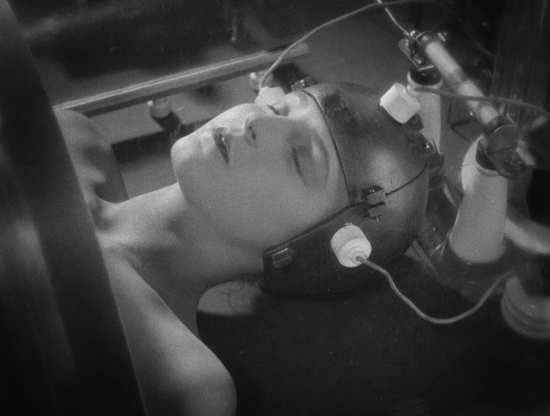

Your Opinions and Comments
Be the first to post a comment!